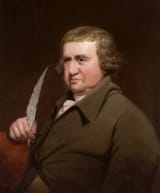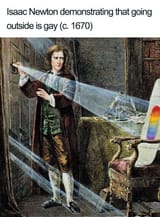Erasmus Darwin: The Great Obfuscator
Erasmus Darwin, the famous Freemason and grandfather to Charles Darwin, represents three converging changes in science.
First, Erasmus Darwin set the foundation for Charles Darwin's naturalist account of Darwinian Evolution. His book Zoonomia was the basis that his grandson would work from. It is with Erasmus that we have the very beginning of scientific naturalism.
Second, Erasmus Darwin's theories of the chemical origins of wind currents was an early attempt to discredit the Hollow Earth theory. Just a century earlier Edmond Halley had proven that the Earth was hollow using geomagnetic readings. Captain John Symmes alludes to this in his famous letter, where he urged leaders from around the world to fund an expedition to prove that there were passages to the Inner Earth found at the poles.
Third, the rejection of the soul/spiritual dimension of reality. The famous novel, Frankenstein, was based on Erasmus Darwin's experimentation and theories. He is both referenced in the 1818 preface to the book as support of the idea that the creation of life is possible by material means, as well as in the introduction to the 1831 edition of Frankenstein where Shelley wrote that she overheard her husband talk about Darwin's experiments with Lord Byron about unspecified "experiments of Dr. Darwin" that led to the idea for the novel.
First, Erasmus Darwin set the foundation for Charles Darwin's naturalist account of Darwinian Evolution. His book Zoonomia was the basis that his grandson would work from. It is with Erasmus that we have the very beginning of scientific naturalism.
Second, Erasmus Darwin's theories of the chemical origins of wind currents was an early attempt to discredit the Hollow Earth theory. Just a century earlier Edmond Halley had proven that the Earth was hollow using geomagnetic readings. Captain John Symmes alludes to this in his famous letter, where he urged leaders from around the world to fund an expedition to prove that there were passages to the Inner Earth found at the poles.
Third, the rejection of the soul/spiritual dimension of reality. The famous novel, Frankenstein, was based on Erasmus Darwin's experimentation and theories. He is both referenced in the 1818 preface to the book as support of the idea that the creation of life is possible by material means, as well as in the introduction to the 1831 edition of Frankenstein where Shelley wrote that she overheard her husband talk about Darwin's experiments with Lord Byron about unspecified "experiments of Dr. Darwin" that led to the idea for the novel.



